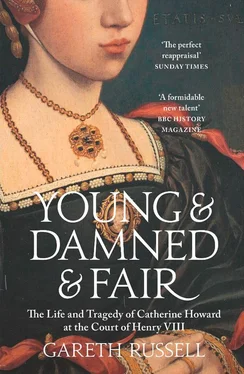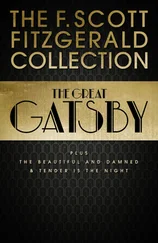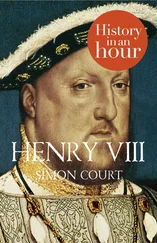Where she was born is more easily established. Most accounts of Catherine’s life state that her place of birth is a mystery, but in fact regardless of when she was born, it was almost certainly in the parish of Lambeth in the county of Surrey, just south of London.12 Before she was born and throughout her childhood, her father Edmund served as a justice of the peace for Surrey, charged with the ‘conservation of the King’s peace’ and to ‘punish delinquents … [and] hear and determine felonies’ in the king’s name.13 Directives to him from the Privy Council, issued on either side of Catherine’s birth, as well as evidence from family accounts, place him specifically in Lambeth – for a time, he lived in a house on Church Street, part of what is now Lambeth Bridge Road.14 Several members of Edmund’s family had homes in Lambeth, most prominently Norfolk House, a mansion renovated at the command of Edmund’s father which subsequently functioned as the Dukes of Norfolk’s main residence near the capital.15 For a Howard, Lambeth was the most logical place in Surrey to set up residence, and as further examination of his finances make clear, by the 1520s Edmund could only, indeed barely, afford one establishment, so it is highly unlikely that Catherine could have been born anywhere else. It was from his father that Edmund acquired his home on Church Street.16
Lambeth was, to use a modern term but ancient concept, a place of high property prices, favoured by the elite for its proximity to Westminster and the court, and in 1522 the Howards began construction of a family chapel within the pretty riverside church of St Mary-at-Lambeth. That chapel has now all but vanished, although the church itself remains, significantly renovated by the Victorians and preserved as a horticultural museum. As in Catherine’s lifetime, the building nestles in the shadow of Lambeth Palace, principal residence of the archbishops of Canterbury.
In the 1520s, the Church prohibited even the grandest families from carrying out private christenings in the intimate chapels that were ubiquitous in any aristocratic dwelling. Baptism inducted a soul into the community of the faithful, and so unless the baby looked likely to die shortly after its birth, the clergy insisted that christenings could only be carried out at the local parish church. Given her father’s residency as a JP for Surrey and her family’s ties to St Mary’s, then the local parish church, it is more than probable that shortly after her birth, Catherine was brought to its porch by her godparents and midwife.17 Regrettably, there is no record of who they were.
Baby Catherine had no right to look upon the interior of the church proper until she had been baptised. The local priest arrived in the porch to greet the baptismal party, which, as was customary, did not include the parents.18 He inquired after the child’s gender. When they told him that they had brought a girl, the padre placed Catherine on his left side – boys went to the right. As the door into the interior opened, the sign of the cross was made on Catherine’s forehead, and the priest, his hand resting on her forehead, asked her name. After answering ‘Catherine’, her godparents handed the priest some salt and he put a little into Catherine’s mouth. Prayers were intoned over her during the ‘exorcism of the salt’, a symbolic banishing of the taste of sin that the Devil had brought to Eden, and the sign of the cross was made over her forehead twice more. More homage was paid to Holy Scripture when the priest spat into his left hand, dipped the thumb of his right hand into the spittle, and rubbed it onto Catherine’s nose and ears to remind the party of how Christ had healed a deaf and dumb man who sought His aid.19 As the sign of the cross was made on Catherine’s tiny right hand, the priest told her that all this was done ‘so that you may sign yourself and repel yourself of the party of the Enemy. And may you remain in the Catholic faith and have eternal life and life for ever and ever. Amen.’20 Now, at last, she could enter the hallowed ground, and before she passed from porch to church, the priest announced, ‘Catherine, go into the temple of God.’
The clergyman, the baby, and her guardians took a few steps to the font, where Catherine was stripped of her christening robe and her godparents answered questions on her behalf, confirming not just her admission to the Catholic faith but also their role as sponsors of her spiritual development. Even if they did not speak Latin, the adults knew enough from a lifetime of services in that language to respond with ‘ Abrenuncio ’ when the priest asked, ‘ Abrenuncias sathane? ’ After renouncing the Devil, they responded with the same answer to the question, ‘ Et omnibus operibus eius? ’ (‘And all his works?’) Likewise for the final question, ‘ Et omnibus pompis eius? ’ (‘And all his pomp?’) With oil on his fingers, the priest made the sign of the cross on Catherine’s chest and back, before asking the godparents, ‘ Quid petis? ’ They answered that they sought ‘ Baptismum ’. To clarify that they wished to see her admitted to the eternal Church, the priest pressed, in ecclesiastical Latin, ‘ Vis baptizari? ’ (‘Do you wish to be baptised?’) And they answered, simply, ‘ Volo .’ (‘I do.’) The priest then shifted Catherine in his arms so that her head faced the east, and he intoned the words, ‘ Et ego baptizo te in nomine patris ’ just before he fully submerged her in the holy water. (‘And I baptise you in the name of the Father.’) Then he plucked the infant from the font, turned to face the south, immersed her again in the name of the Son and then, this time upside down, in the name of the Holy Spirit. Finally, the priest passed what was quite probably a crying baby into the arms of her most senior godparent, who held Catherine as she was bundled into a chrisom, a hooded robe that covered her forehead and body to preserve the signs of her baptism.
Her godparents held a candle in Catherine’s little hands as the priest prayed, ‘Receive a burning and inextinguishable light. Guard your baptism. Observe the charge, so that when the Lord comes to the wedding, you may be able to meet him with the saints in the hall of heaven.’21 That duty was stressed to the godparents, who were also enjoined to make sure she knew her Our Father, Hail Mary, and Apostles’ Creed. Catherine was taken home in the borrowed chrisom; her mother would return the garment when she was ready to rejoin society.
Within a year or so of her birth, Catherine’s father joined most of the other Howards at Framlingham Castle in Suffolk for his father’s funeral. In May 1524, there was little outward sign that they all stood on the precipice of an unfamiliar world. The Reformation, the real undertaker of the Middle Ages, was not quite seven years old, and its influence had yet to be significantly felt by the majority of Tudor subjects. There was no deviation from the centuries-old Catholic liturgy as the Howards gathered to bury their patriarch, and saviour, Thomas Howard, 2nd Duke of Norfolk, dead at the age of eighty in the county of his birth.22
Unlike a christening, most aristocratic farewells in the sixteenth century were neither an intimate affair nor a single ceremony. The late duke had nine surviving children by the time he died in May 1524, several of whom had children of their own, giving Catherine kinship to most of the great landed families.23 Catherine’s aunt Elizabeth was married to Sir Thomas Boleyn, head of one of the wealthiest families in Kent and currently in pursuit of his right to succeed his Irish grandfather as Earl of Ormond.24 Anne Howard was already a countess through her marriage to the head of the de Vere family. In the months preceding the duke’s death, Edmund’s unmarried sisters were affianced, and the fractious negotiations concerning their dowries and widows’ rights were tidied up. The second youngest, also confusingly christened Elizabeth, *was betrothed to the heir of Lord Fitzwalter, another prominent East Anglian landowner.25 Katherine, the youngest and fieriest of the late duke’s daughters, was accompanied to the funeral by her handsome if equally temperamental fiancé Rhys, scion of a successful political family in south Wales – Rhys had an ailing grandfather who was not expected to live much longer.26 In Wales, the young man was known as Rhys ap Gruffydd, but the English often preferred to anglicise the couple’s surname to ‘Griffiths’.27 The only Howard sister left unattached at the time of their father’s funeral was Lady Dorothy, but her father had ‘left for her Right, good substance to marry her with’, and the family eventually arranged a wedding with the Earl of Derby.28
Читать дальше











![John Bruce - The Lettsomian Lectures on Diseases and Disorders of the Heart and Arteries in Middle and Advanced Life [1900-1901]](/books/749387/john-bruce-the-lettsomian-lectures-on-diseases-and-disorders-of-the-heart-and-arteries-in-middle-and-advanced-life-1900-1901-thumb.webp)
